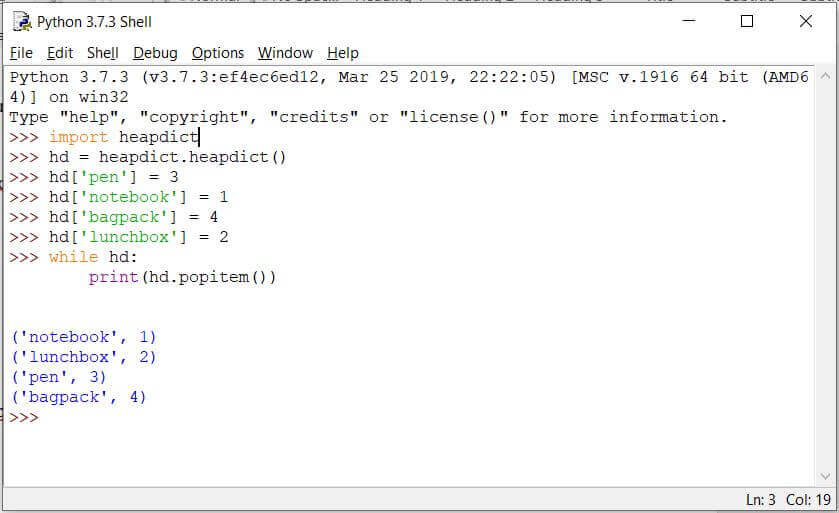

But, if you are looking to create a larger queue, lists are not a good option.įor reference, let’s walk through an example of a priority queue using lists. You can use a traditional list as a priority queue if you only need to store a few values. As you change items in the list, you would need to re-order the list, which takes up time.

However, this is a relatively inefficient way of maintaining a priority queue. To do so, you would create a list, then order it in ascending order. Technically, you can create a priority queue using the Python list data structure. As you can see, all the items in our queue are printed out in order of their priority. Then, the removed item is printed to the console. This loop removes the item at the top of the queue using heappop(). We then created a while loop which loops through each item in our priority queue. This queue stores the ticket numbers for each ticket holder and the name of each ticket holder. We used the heappush() method to push three tuples to our priority queue. To access the PriorityQueue class, we need to import it into our code, which we can do using this Python import statement:įirst, we imported the heapq library, and then we initialized a Python variable called ticket_holders. To retrieve an item from a PriorityQueue, you can use the get() method. You need to import the queue library to use this class. This class is part of the Python queue library. The queue.PriorityQueue class creates a Python priority queue. Priority Queue Python: queue.PriorityQueue But, this strategy is less efficient than using the PriorityQueue queue class or the heapq module. You can define a priority queue using a list structure. There are two ways to define a priority queue in Python: To keep track of orders, you would want to use a queue. The person who places an order first should be served before the people who place their order next. There are a few scenarios where using this structure can be helpful.įor instance, suppose you are building an order tracking app for a restaurant. In computer science, queues are data structures that store items in the first-in, first-out (FIFO) order. The priority of each element in a priority queue is decided depending on the value of the element. Priority queues are a modified version of a queue that stores data in order of which element has the highest priority. We will show you two more efficient approaches you can use to create a Python priority queue. This tutorial will discuss why you should not use a list to create priority queues. This allows you to easily access the smallest and largest value in the queue.

A priority queue is a data structure that stores data based on the value of its keys in ascending order.

Career Karma matches you with top tech bootcamps.


 0 kommentar(er)
0 kommentar(er)
